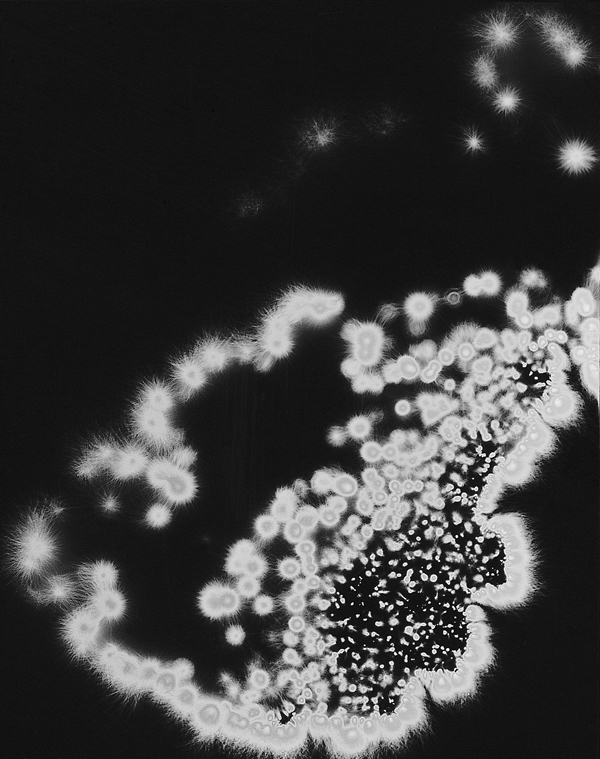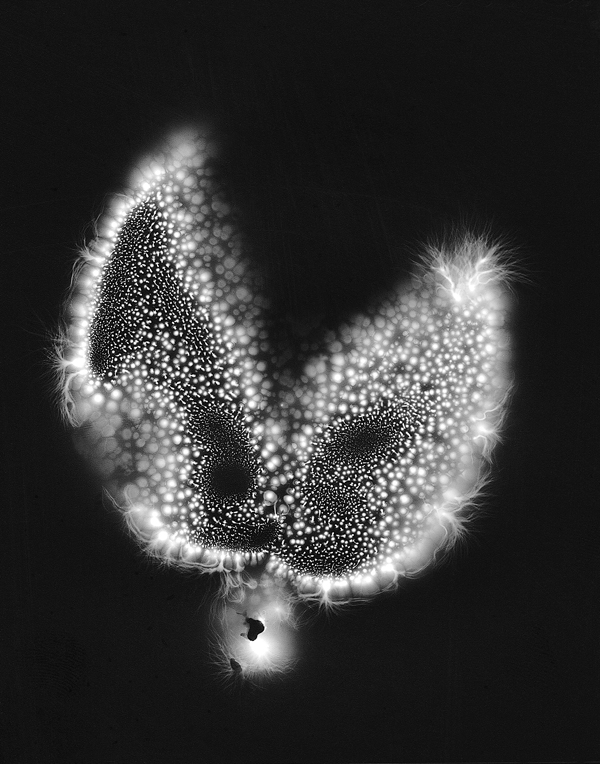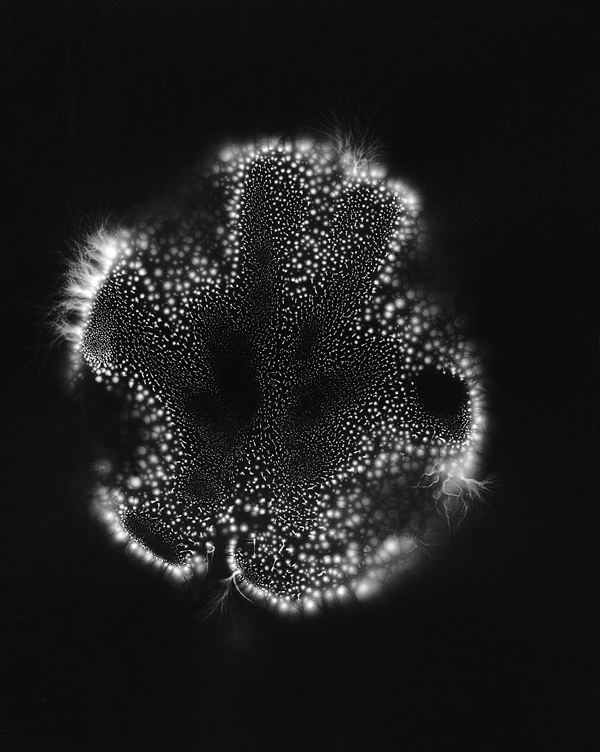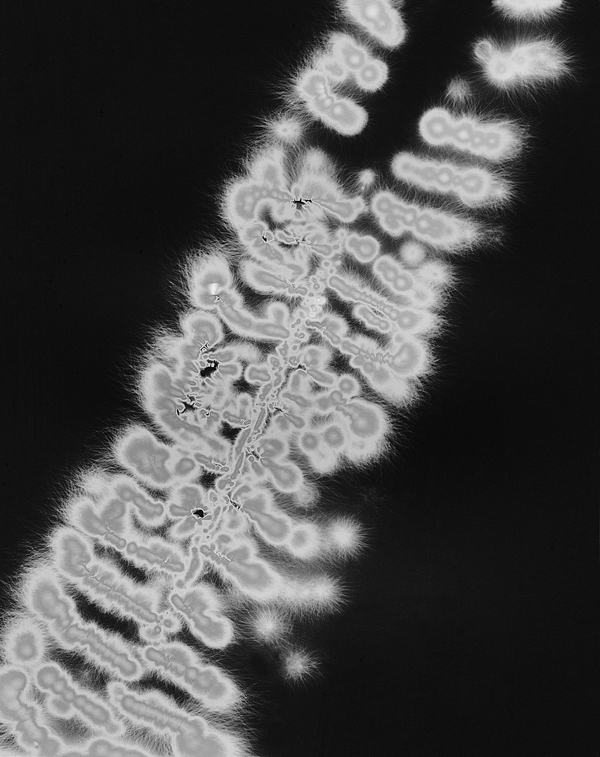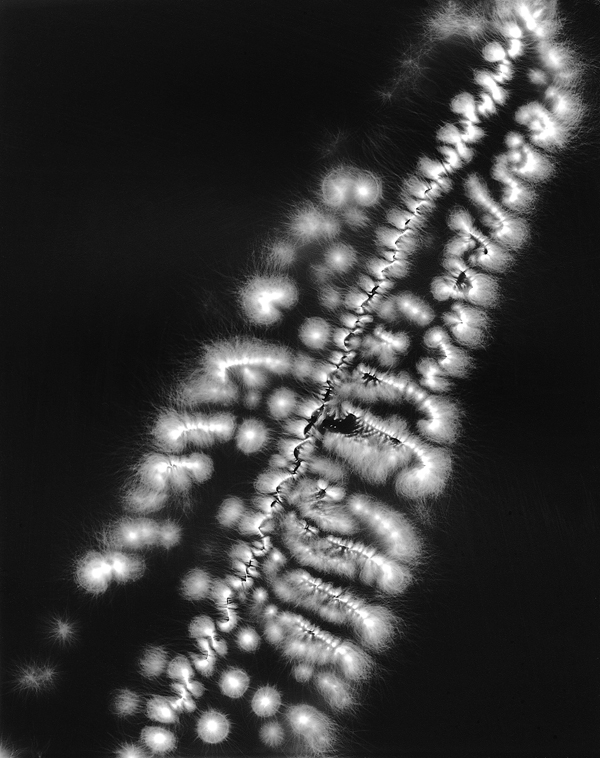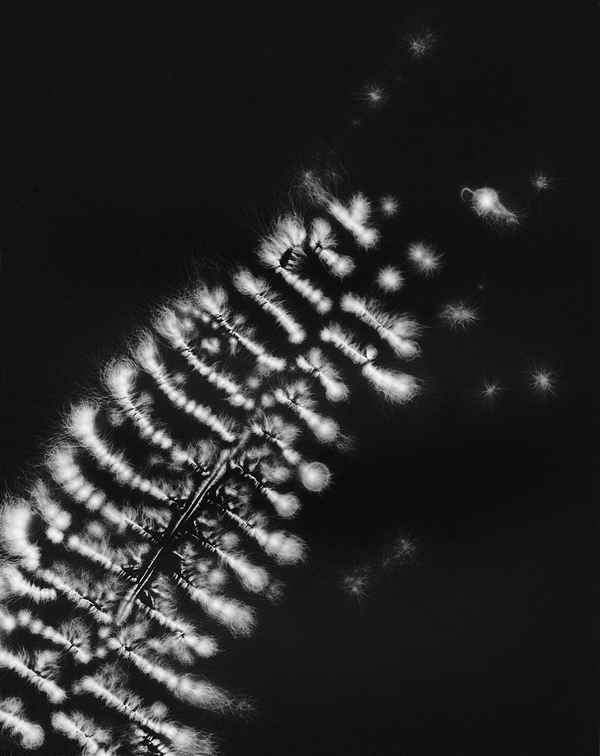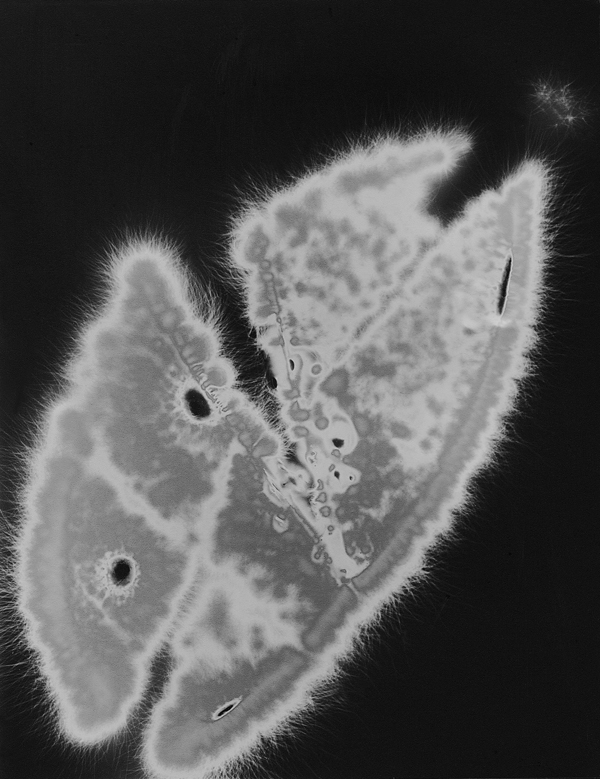[Été 1996]
by Marie-Josée Jean
Marie-Jeanne Musiol’s images invest the territory of invisibility by inscribing subtle traces of emanations on their surface – more precisely, the luminous emanations commonly known as “auras.” These auras, once sunk deep into the secret of their own invisibility, have been revealed thanks to the Kirlian apparatus, a vision-enhancing machine that unveils, through electrical impulses, the sheath of energy that surrounds substances.
Far from being in the domain of the occult, this apparatus is used mainly for therapeutic purposes: careful analysis of the body’s sheath of energy reveals the presence of disease well before symptoms appear. Musiol has diverted this experimental technology from its original application for use in her formal research.
For a number of years, Musiol has been exploring various kinds of apparitions by attempting to control the gradual darkening of light-sensitive paper in the crucial instant of revelation. With the Kirlian apparatus, she is able to capture discrete signs of the apparition at the top of the process – that is, at the very moment the image is registered on the film. The conditions of the interception are related to the first step of the darkroom procedures, in which the trace of the image’s presence is recorded under exposure to light. However, the similarity is limited to the apparatuses of interception, since the processing of the image is quite a different matter. While the luminous imprints are captured in their entirety at the moment the photograph is taken, they are submitted to several formal manipulations – inversion, solarization, splicing – in the darkroom. These manipulations change the referential relations of the image: from simple pieces of evidence, the luminous imprints become true aesthetic objects, with a remarkable graphic quality. In doing so, they express, in a suspenseful flash, the irreducible presence of the aura.
This phenomenon of apparition, about which George Didi-Huberman wrote brilliantly, contains a paradox, since “that which appears … will have provided access to something that evokes the inverse of the visible world”1 – in this specific case, the field of the immaterial. In fact, Musiol’s series of images present a strong luminosity that overflows from the deep black like a jutting protuberance, apt to detach itself from the photographic corpus – and become pure immateriality.
The disappearance of the photographic substance behind the exuberance of the luminous imprint occurs in virtuality, issuing from the confrontation of light and dark. In fact, the materiality of the photographic support is essential for production of the effects. It is in the peculiar adhesion of the invisible to the photographic support that the immateriality is manifested. By making visible the sheath of energy surrounding bodies on the photographic surface, Musiol invites us to witness the transmutation of a leaf, a crystal, a hand, into pure light, and brings out yet again the profound duality between corporeal and incorporeal events that have punctuated the history of philosophy. But this time, it is no longer words that offer such a proposal, but images.
As a product of light, photography has the unique ability to fix the visible and capture the immaterial. Through this series of images, Marie-Jeanne Musiol has been able to capture, with great sensitivity, the presence of a presence.
Photographe de renom dans le milieu des arts au Canada, Marie-Jeanne Musiol présente ses installations photographiques dans les galeries publiques et les centres d’artistes au Canada et à l’étranger. Le portfolio présenté ici est le résultat d’une approche de la photographe qui travaille sur les empreintes énergétiques et fait des recherches en photo Kirlian avec l’appui de Sylvain Bélanger.
Marie-Josée Jean publie régulièrement des textes dans des revues d’art et des catalogues d’exposition. Elle a été commissaire de l’exposition Du réel subjugué et a assuré la coordination du colloque Présence de la photographie dans les collections des musées durant le dernier Mois de la Photo à Montréal. Elle termine actuellement une maîtrise en étude des arts à l’université du Québec à Montréal.


